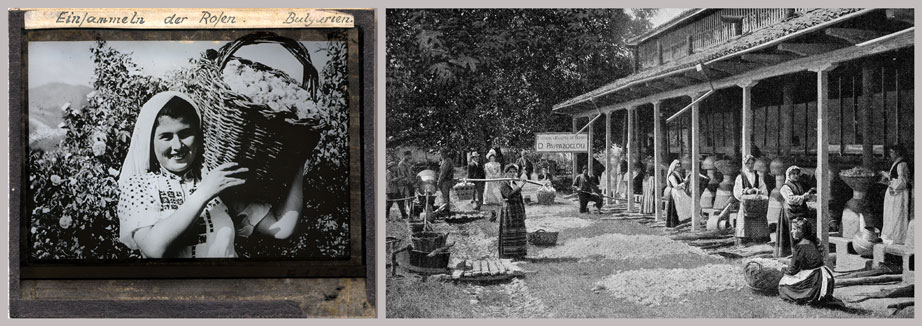 |
 |
 |
 |
Saturday, 2nd June, Kazanlak |
|
|
 |
Out to the fields again today, to see the rose harvest celebrations there. The lay-by is the scene of most of the activity. Interestingly, on one side of the road there are ceremonial pickers in traditional costumes, accompanied by musicians and photographed and filmed by tourists including ourselves while at the same time real picking is continuing on the other side. Women with little baskets strew rose petals with ‘gay abandon’ on this side of the road while on the other they are being collected with much care in plastic sacks that eventually weigh about fifteen kilos. Some of the ‘parallel’ pickers are students, some are soldiers; there are whole Roma families at work and one old woman who, at 72, still comes here. She tells us a short version of her life and how the rose business has changed over the years. She used to work in the Arsenal and was also a leading member of the country dance club. |
|
In 1952 she caught the attention of a visiting Russian painter who made a portrait of her in full costume. When he was finished she was very happy with the results, but it was never exhibited in Kazanlak. Instead it was transported to Leningrad for an exhibition. She never saw it (or the painter) again. Her eyes moisten at the memory. She tells us that the older children and college students also used to be employed in harvesting the rose blossoms. This has to be done early in the morning and is usually finished by noon at the latest. It is completely determined by the oil content of the Damask rose blooms which decreases in the sun’s heat. There are many (mostly romantic) myths about how the roses came from the Middle East to Bulgaria. Most of the rose oil produced goes to France, the centre of European perfume making. |
|
 |